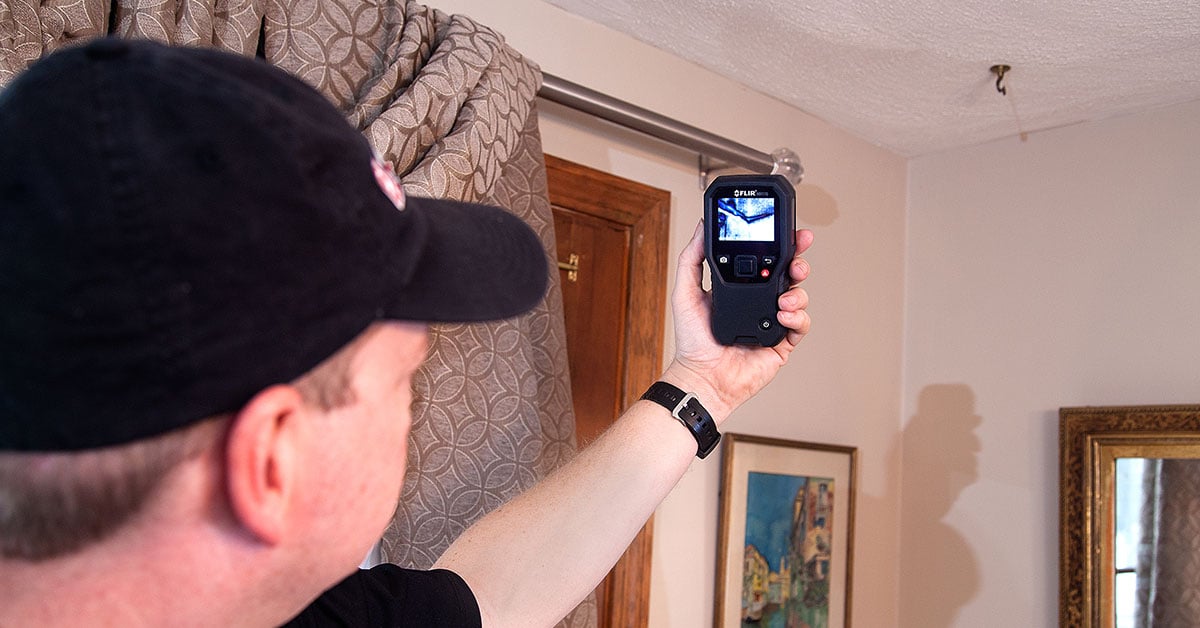Identify Hidden Water Line Leaks: 6 Clever Hacks
Identify Hidden Water Line Leaks: 6 Clever Hacks
Blog Article
The author is making a few good observations regarding Leaking water lines as a whole in this post followed below.

Early discovery of leaking water lines can alleviate a possible calamity. Some little water leaks may not be noticeable.
1. Examine the Water Meter
Checking it is a surefire way that aids you discover leaks. If it relocates, that suggests a fast-moving leak. This means you may have a slow-moving leak that could also be below ground.
2. Inspect Water Consumption
Assess your water bills and also track your water usage. As the one paying it, you ought to notice if there are any kind of disparities. If you find sudden changes, despite your intake being the same, it implies that you have leakages in your plumbing system. Keep in mind, your water expense ought to drop under the exact same range on a monthly basis. An abrupt spike in your costs suggests a fast-moving leakage.
At the same time, a stable rise monthly, even with the exact same habits, shows you have a slow leakage that's also slowly rising. Call a plumber to extensively examine your residential property, especially if you feel a warm area on your floor with piping beneath.
3. Do a Food Coloring Examination
When it comes to water consumption, 30% comes from commodes. Examination to see if they are running appropriately. Drop flecks of food color in the container and wait 10 minutes. If the shade in some way infiltrates your bowl during that time without flushing, there's a leakage between the storage tank and bowl.
4. Asses Outside Lines
Don't fail to remember to examine your outside water lines as well. Must water permeate out of the link, you have a loose rubber gasket. One tiny leak can squander heaps of water and also surge your water expense.
5. Analyze the circumstance as well as check
Homeowners must make it a routine to examine under the sink counters and also also inside closets for any kind of bad odor or mold and mildew development. These 2 warnings indicate a leakage so punctual focus is called for. Doing regular assessments, also bi-annually, can conserve you from a major issue.
If you know your home is currently old, maintain a careful eye on your heating units, hose pipes, pipes etc. Check for discolorations as well as deteriorating as the majority of pipelines and also devices have a life expectancy. They will additionally normally degrade due to tear and also put on. If you presume leaking water lines in your plumbing system, do not wait for it to rise. Call an expert plumber immediately so you don't wind up with an awful mess in your home.
Early discovery of dripping water lines can alleviate a potential disaster. Some tiny water leakages may not be noticeable. Inspecting it is a surefire means that helps you uncover leaks. One tiny leakage can squander bunches of water as well as spike your water expense.
If you suspect leaking water lines in your plumbing system, do not wait for it to intensify.
How to Know If Your Home Has a Hidden Leak
Water Meter Reveals Inexplicable Water Usage
If you’d like to test whether or not there’s a leak somewhere in your home, you can do this using your water meter. Here is how to conduct the test:
Don’t use any water in your home for at least 30 minutes; this also means not turning on faucets or water-using appliances.
Go outside, and check your water meter for activity.
If your water meter shows that there was activity, even though no one was using any water, this proves that there is a leak in your home.Visible Mold or Mildew Growth
Leaks behind walls create moist, dark environments that allow mold and mildew to grow and thrive. Eventually, you might see mold growth forming on the wall closest to a hidden leak.
If mold is growing in an area that receives a high amount of moisture, such as a bathroom, it may simply be an indication that better ventilation is needed. However, if you see mold growth on a wall or the ceiling in an area where you would not expect, you probably have a hidden leak.
Musty, Mildew Odor
Sometimes you might not be able to see the mold or mildew that is growing as a result of a leak. However, the smell can give the problem away just as easily. If you catch a whiff of something musty, there’s a good chance that old water is collecting somewhere in your home that you can’t see.
Stained/Warped Walls, Ceilings, or Floors
When your home soaks up water, a variety of red flags can become visible, including ceiling stains, bubbling drywall, warped walls, and sagging floors. While these issues can be caused by excess humidity, they can also be signs that a pipe or plumbing connection has started leaking behind your walls.
Inexplicably High Water Bill
After a while, you get a general sense for what your water bill should be. If you own a pool or sprinkler system, your bill will tend to be higher during summer. However, if you receive a water bill that seems especially high, and you can’t figure out what caused it, then you may have a hidden leak somewhere that’s increasing your bill.
https://www.plumbingjoint.com/blog/2019/july/how-to-know-if-your-home-has-a-hidden-leak/

I was guided to that article on Detecting hidden plumbing leaks through a friend on our other web blog. Those who enjoyed reading our post if you please remember to share it. Thanks so much for taking the time to read it.
Expertise at your service. Report this page